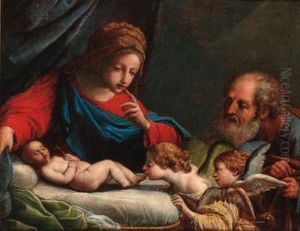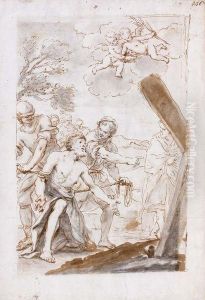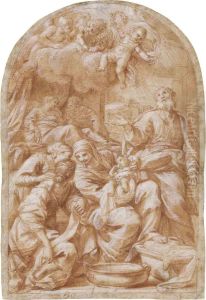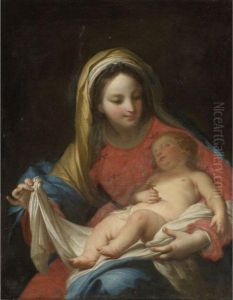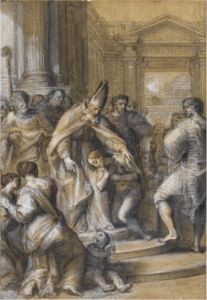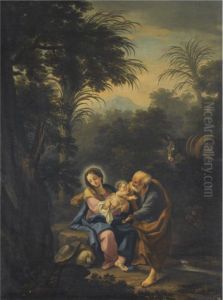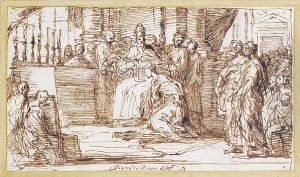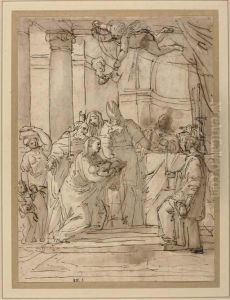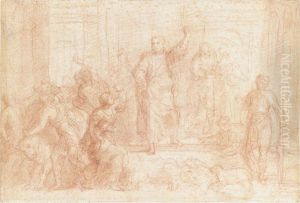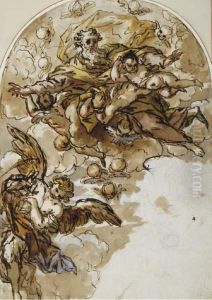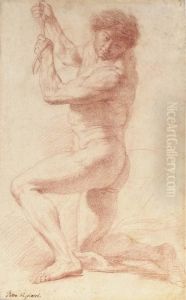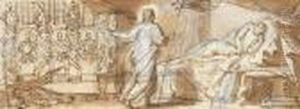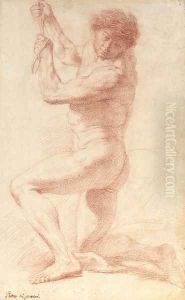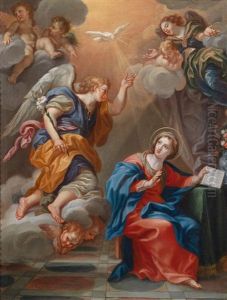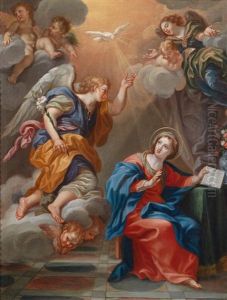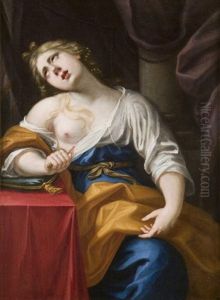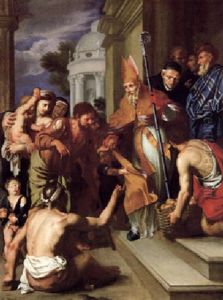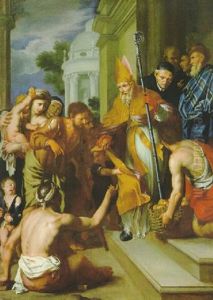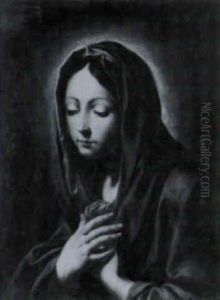Pietro Antonio De Pietri Paintings
Pietro Antonio De Pietri was an Italian painter born in 1663, known for his contributions to the Baroque period of art. His work primarily focused on religious themes, a common subject matter for artists of his time due to the influence of the Catholic Church in Italy. De Pietri's paintings are characterized by their dramatic use of light and shadow, a technique known as chiaroscuro, which was popular among Baroque artists and helped to create a sense of depth and volume in their compositions.
De Pietri was born in Parma, a city with a rich artistic tradition that also produced the famous painter Parmigianino. Despite the prominence of his birthplace in the Italian art scene, little is known about De Pietri's early life or training. It is believed that he was influenced by the works of Correggio and Guercino, two of the most renowned painters of the time, who were known for their dynamic compositions and innovative use of light.
Throughout his career, De Pietri received commissions from various religious institutions, which were the primary patrons of art during the Baroque period. His paintings often depicted scenes from the Bible, the lives of saints, and the Virgin Mary, executed with a deep sense of devotion and emotion. De Pietri's ability to convey the spiritual and emotional aspects of these scenes made his works highly sought after for churches and private devotional spaces.
Pietro Antonio De Pietri's contribution to the Baroque art movement was significant, yet he remains less well-known than some of his contemporaries. This may be attributed to the limited documentation of his life and the overshadowing fame of other artists of the era. Despite this, his paintings continue to be appreciated for their emotional depth and technical skill.
De Pietri's death in 1716 marked the end of a career that had enriched the Italian Baroque with a number of significant religious artworks. Today, his paintings can be found in various churches and museums, where they continue to be studied and admired for their artistic and historical value. De Pietri's legacy, though modest in comparison to the giants of his time, is a testament to the rich tapestry of talent that existed during the Baroque period in Italy.
